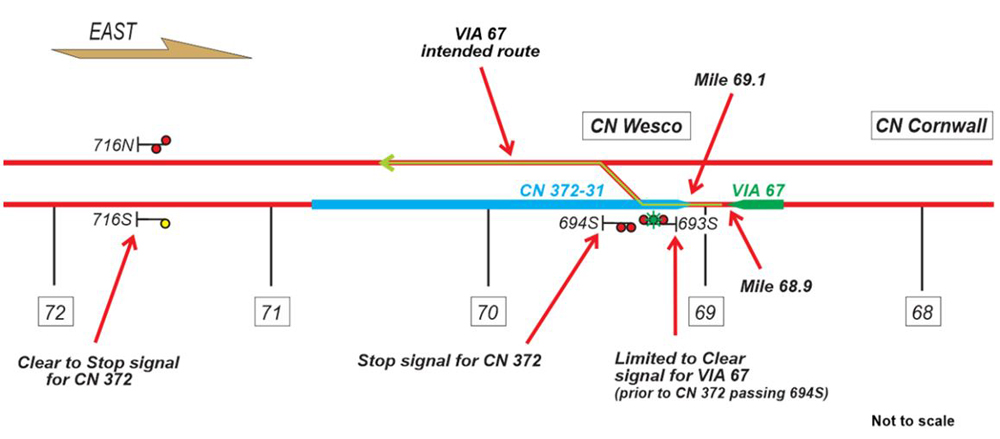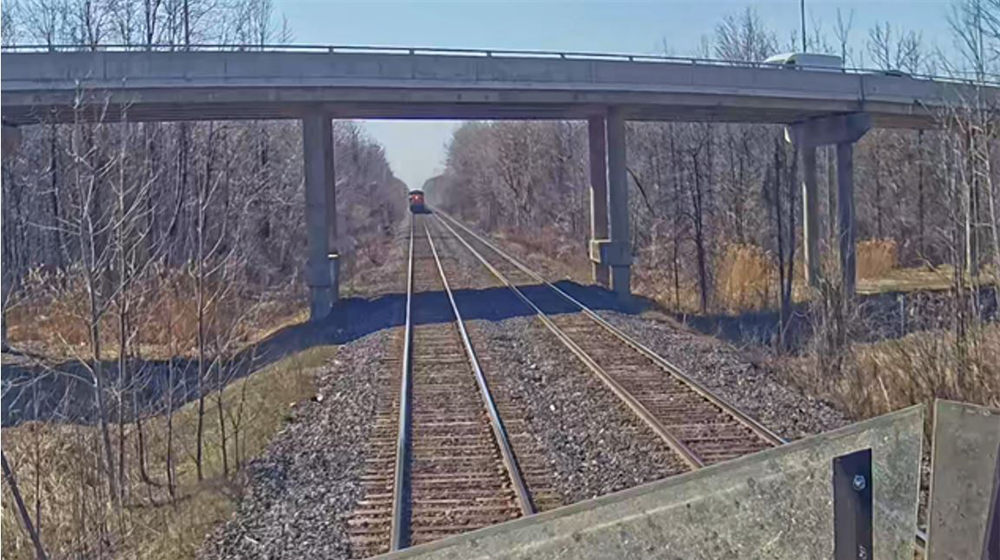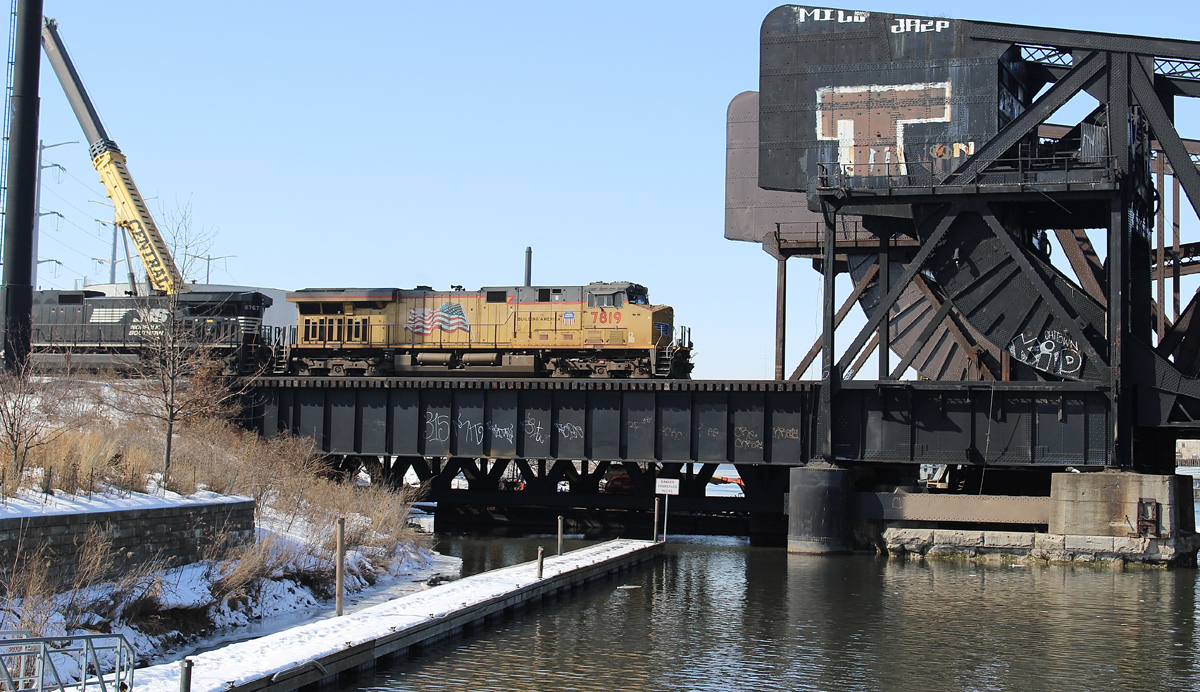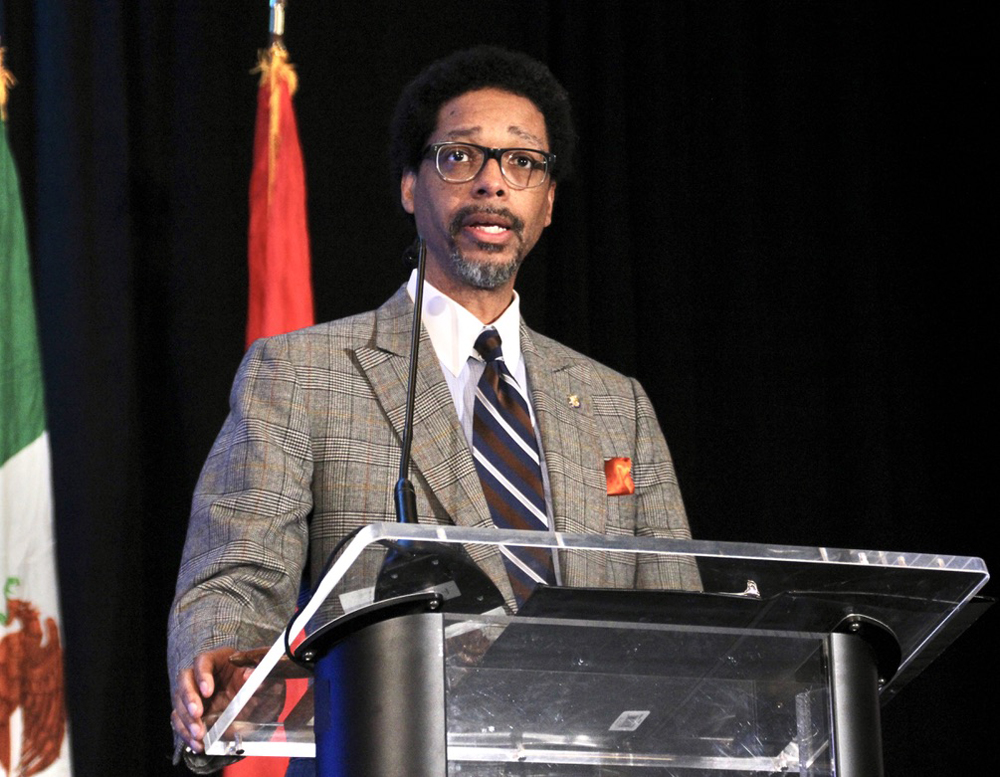
GATINEAU, Quebec — A VIA Rail Canada train came within about 1,100 feet of a head-on collision with a Canadian National freight train in an April 2023 incident, the Transportation Safety Board of Canada said in an investigation report released today (Wednesday, Oct. 16). In the report, the agency renewed its call for Canada to require a system similar to positive train control in the United States.
“Even though the TSB has been calling for this for almost 25 years,” the agency said in a press release accompanying the report, “the Canadian railway industry continues to rely solely on administrative defenses to protect against train crews not responding appropriately to signal indications.” Multiple investigations have demonstrated, the TSB said, “that the current defenses in place are not enough to prevent adverse outcomes.”
The incident occurred April 13, 2023, at about 2:51 p.m. on CN’s Kingston Subdivision near Cornwall, Ontario. CN train 372 was traveling eastbound with two locomotives — one at the head end and a midtrain distributed power unit — and 126 cars, including 16 loaded with hazardous materials, while VIA Train No. 67, with a locomotive, four coaches, and 167 passengers aboard, was en route from Montreal to Toronto.
Approaching a signal at mile 71.6 on the south track of the two-track main line, the freight train’s crew members were discussing where to set out a car that needed repairs, and missed a Clear to Stop signal indication, which requires them to be ready to stop at the next signal. Unprepared for the stop indication at the next signal, which they did not positively identify until about 500 feet away, the crew ran past that signal at 43 mph despite an emergency brake application when they recognized the situation. The crew immediately made an emergency radio broadcast. The train eventually stopped some 1,786 past the signal at approximately mile 69.1.
The engineer of the VIA train, which was on the same (south) track as the freight train but was preparing to cross to the north track, heard the emergency broadcast and brought his train to a stop short of the freight train, which had traveled past the point where the passenger train was to cross over. The TSB found that the emergency broadcast by the freight train’s crew allowed the VIA crew to stop in time to avoid a collision at mile 69.9.
In its final investigation report, the TSB notes that it has been calling for “physical fail-safe defenses” since 2000, and that while Transport Canada and the rail industry have been discussing the issue, “the pace of development is slow.” The agency strongly urged the transport agency and rail industry to accelerate the development of a fail-safe train control system on “high speed rail corridors and all key routes in Canada.”















PTC is still VERY MUCH a work in progress in the United States. If Canada can drag this out another decade they can acquire a PTC system that actually works out of the box.
I think incidents like this happen more often than is reported. About a year ago in Boston Bar BC Canada, a westbound freight with a trainee running the train and the regular conductor and engineer watching, did not observe a “Clear to Stop” signal approaching Boston Bar and overran a stop signal. They claimed they were distracted by a conversation they were having in the cab. Another time, I was riding the VIA Canadian near Spuzzum BC, about 9PM. I was dozing off in my lower berth when I heard and felt the brakes go into emergency. I put my radio on to hear what happened. Anytime brakes go into emergency for any cause, engineer initiated, mechanical fault, or safety device, it must be reported. The engineer claimed he saw the Clear to Stop signal and was prepared to stop at the next signal but when he applied the brakes it was not slowing down enough due to wet rails, so he had to use the emergency to avoid overrunning the stop signal.
Could a low cost forward facing camera and signal recognition software be developed to read existing signals and give an extra warning if they are going too fast? Should be possible with a system like facial recognition. Even consumer grade point and shoot cameras can identify faces to focus on them.
This hearken to the devastating 1918 collision of two passenger trains at Dutchman’s Curve on the NC&STL Railway west of Nashville. The two steel Pullman sleeping cars with enclosed vestibules at the rear of the overnight train from Memphis remained intact (and the last car on track) as the wooden open-platform cars of both trains telescoped. [Amtrak should restore the time-honoured railway tradition of placing sleeping cars at the rear of the train for added safety as well as amenities given the higher fares.]
Such head-on collisions were reportedly, and unfortunately, commonplace during the early days of railroading in the nineteenth century when safety was not a priority. The dark-humor term for these wrecks was “cornfield meets.”
There was no one to bleed so the problem will probably be ignored.
Even though the crew of 372 was clearly at fault, their announcement on the radio prevented a disaster.
I wish that a crew had made radio warnings on the afternoon of January 6, 2012 after a rear end collision. It would have given a third train enough time to prevent, or reduce the severity of, a secondary collision 2 minutes later. Yep, I was on the third train.